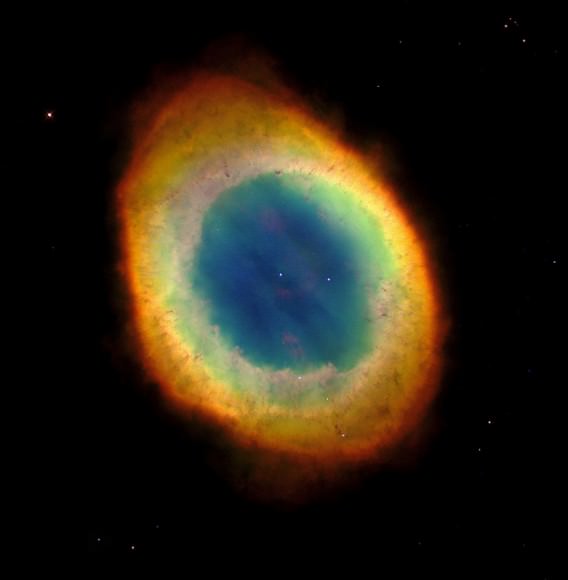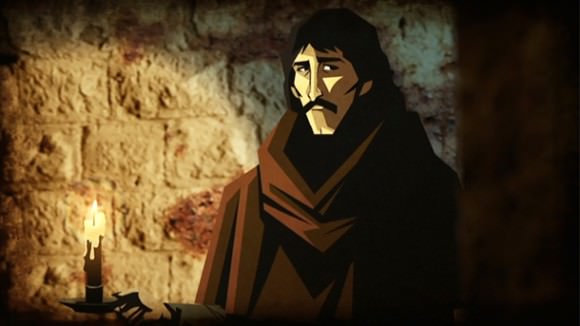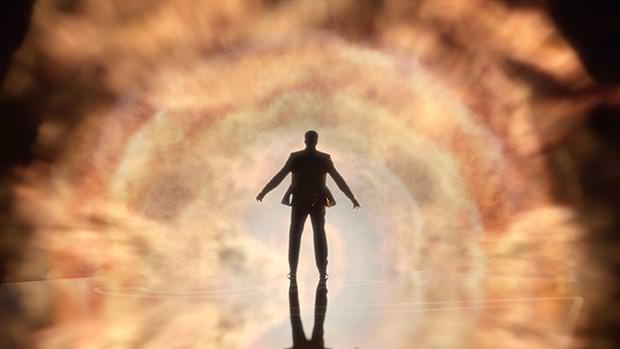With much anticipation from the astronomy and science community, the opening episode of the new and updated version of Carl Sagan’s “Cosmos” series premiered to the masses on television in North America last night. This reboot – this time hosted by astrophysicist Neil de Grasse Tyson — did a wonderful job of paying homage to Sagan while showcasing the grandeur of space, as well as portraying the infinitesimally small amount of time that humanity has existed. Like its original counterpart, the first episode of the series takes viewers on a quick tour of the Solar System and Universe, showing our cosmic “address” as it were, going back to the Big Bang, but also touching on multiverses and a potentially infinite Universe.
As de Grasse Tyson said at the beginning, “from the infinitesimal to the infinite; from the dawn of time to the distant future.”
There were also – seemingly – an infinite number of commercial interruptions. You can watch the episode in its entirety below, without commercials, thankfully. Watching it on television last night was disappointing because of those commercial interruptions – sometimes only a couple of minutes apart — making one wish for the PBS-commercial-free version of the original Cosmos with Sagan.
And I wasn’t the only one feeling those sentiments:
What I miss most from the original 'Cosmos'? No commercials #Cosmos
— Wayne Hale (@waynehale) March 10, 2014
(Yes, I watched the show while keeping an eye on what the Twitterverse had to say about it.)
But airing the series on the Fox Network and its affiliated channels (I watched it on the National Geographic Channel) was a calculated move by the series’ producer Seth MacFarlane to showcase the series and the science to a population that may not otherwise be exposed to science at this “popular” level. And clearly, science and the scientific method gets top billing in this series:
“This adventure is made possible by generations of searchers strictly adhering to a general set of rules: test ideas by experiment and observation … follow the evidence where it leads and question everything,” said Tyson.

With a combination of real images from telescopes and spacecraft, computer generated imagery and surprisingly watchable animations, most intriguing for me was the “cosmic calendar.” Those who have seen Sagan’s original series will remember his version of the cosmic calendar as a way to conceptualize the age of the Universe, compressing 13.9 billion years down to one year. Tyson’s flashier calendar also showed how January 1 would mark the Big Bang and December 31 would be the present – making each day represent about 40 million years. At this rate, humanity’s entire recorded history only occupies just the last 14 seconds of the year.
But as Tyson noted, science has provided unmatched discoveries during that short span of time: “The scientific method is so powerful that in a mere four centuries, it has taken us from Galileo’s’ first look through the telescope to knowing our place in the Universe.”

When I heard there were going to be animated sequences of historical events (the original series used actor portrayals) I was disappointed, but the animations in this series premiere surprised me by being quite engaging.
They told the story of Giordano Bruno, the 16th century Italian monk turned astronomer. He had theorized that other planets existed with other lifeforms like ours. In his 1584 book “On the Infinite Universe and Worlds,” Bruno wrote : “… there is a single general space, a single vast immensity which we may freely call Void; in it are innumerable globes like this one on which we live and grow. This space we declare to be infinite… In it are an infinity of worlds of the same kind as our own.”
This was controversial for his time, but even in a church-dominated society, it wasn’t grounds for being declared a heretic. But later Bruno followed his argument to its logical conclusion: if there are an infinity of worlds, and if some worlds have sentient beings created by God, then wouldn’t these planets also need to be saved by God? The notion other Jesuses was not viewed well, and the church convicted him of heresy, and burned him at the stake.
Phil Plait talked more about this today in his review of “Cosmos” and I agree with him that this wasn’t really about showing religion in a bad light, but about making “a bigger point about suppression of thought and the grandeur of freedom of exploration of ideas.”
Other fun moments were when a CGI (but quite realistic) dinosaur fish named a Tiktaalik crawled out of the sea right next to Tyson, depicting the evolution of life on Earth. Most endearing was perhaps Tyson’s claim that “we are ALL descended from astronomers;” how our ancestors depended on the stars to know the change of seasons.
While this series premier was a quick overview, one surprise is that it showed just one theory – and the oldest and perhaps outdated — of how our Moon was formed, by a conglomeration of the same debris that make up Earth. These days it seems the theory of a Mars-sized planetary collision is the most accepted theory.
The show began and ended with the voice and words of Carl Sagan, and Tyson shared his story about his own personal interactions with Sagan. This was a very authentic part of the show, and allowed the torch to be passed from Sagan to Tyson.
If you missed it: Karma. "For Neil Tyson, With all good wishes to a future astronomer" – Carl Sagan pic.twitter.com/BQ2p6RRRys
— Steve Silberman (@stevesilberman) March 10, 2014
And then there was Tyson using Sagan’s famous “we are made star stuff” quote:
“They get so hot that the nuclei of the atoms fuse together deep within them to make the oxygen with breathe, the carbon in our muscles, the calcium in our bones, the iron in our blood,” Tyson said. “You, me, everyone: We are made of star stuff.”
Astronomer thought process: RT @Alex_Parker: S?T?A?R? ?G?U?T?S? S?T?A?R? ?R?E?F?U?S?E? S?T?A?R? ?B?E?L?L?Y?B?U?T?T?O?N? ?L?I?N?T? STAR STUFF
— Nancy Atkinson (@Nancy_A) March 10, 2014
This series premiere was a rousing tribute to science and I am definitely looking forward to more. Here’s hoping this series does what MacFarlane had in mind: get the general public to start talking about science again.
If you are feeling the need for more “Cosmos” you can watch the original series at Hulu Plus, and at the Carl Sagan website, learn more about the legend.
There is “The Seth MacFarlane collection of the Carl Sagan and Ann Druyan archive, 1860-2004” at the Library of Congress. MacFarlene supported this new Carl Sagan archive.
See more at the Cosmos Online website (there’s even an app for it.)


Nancy,
If you rewatch the first episode it clearly shows a large object striking the earth and the moon forming from the debris field.
“fragments from orbiting debris collided and coalesced until they snowball to form our moon”
While liking it (except for the commercials) I was rather surprised at the incorrect depiction of the Asteroid belts as being areas full of debris, so much so that you had to dodge through them. The average separation distance for main belt asteroids is, what, 50 Million km? Too bad that they could not have gotten that right.
Yes! Thank you!
Here you have a platform uniquely designed to educate the lay audience, and we get treated to an “Empire Strikes Back” asteroid field scene! This program, with its legacy and enormous following, should be above this type of subtle misinformation. I’m guessing that his starship also “whooshed” by in the passing shots–I wasn’t paying that close of attention.
Also, the poorly animated cartoon of Bruno detracted from the credibility of the program. While it was interesting that Bruno had this belief, at this time in history, it could have been summed up in a sentence or two and the show moved on to other topics; there is so much to see and tell.
I might not have minded the adds so much if some hadn’t blended into the visuals of the program so much. At times even a person familiar with the material could not detect that a commercial had started – much less a young person realizing the switch. And some were also aggressive and not proper material for young minds. There had to have been a disconnect somewhere between the production people and the revenue people. Frankly, it made me quite angry because it will have distorted the concepts in a young person’s mind.
Pete
Anyone else think the animated Bruno looked like George Harrison from the Yellow Submarine cartoon and thus kept thinking about “Across the Universe” every time he was flying around in the stars….?
Since this is a show that supposedly emphasizes the scientific method and has a lot to say about the “infinite” perhaps someone can tell me how you verify that you have an infinite number or amount of anything, even in theory? How to tell the difference between 10 tetrated to 10 of something and infinite? How to measure difference between Graham’s number and infinity using any conceivable instrument or process, even when granted control of a billion universes of matter and a quadrillion Big Bang’s of energy?
Nothing we observe in the heavens or elsewhere in our experience is infinite. The breadth of the observable universe is no more infinite than the length of my forearm, no closer at all in fact. How do you get from these observations of the finite and reasonable extrapolations about them and arrive at “infinite” while exercising a scientific mindset?
I watched the episode at a premier at UTA. Stood in line for an hour and a half to get a seat sitting on the floor of the lobby to watch it on a projector screen because the theater was filled to capacity.
So, I missed the commercials. However, I could easily tell where they were to be inserted.
I also recorded the episode on my DVR so as to get the complete series. I have the Original on DVD and will most likely buy this one, too. To me, the commercials aren’t a big deal as I can FF through them and they’re only temporary, anyway, as they won’t be there when I get the DVD – bluray, whatever.
What I REALLY didn’t like was the politicization of the show by having that fool of a president introduce the show. The premiere had an intro by Ann, just like the DVD set of the Original does. Hopefully, the fool will not be on the DVD.
As for the show itself, when I saw Brannon Braga in four executive positions, I heaved a sigh of distress. He ruined Star Trek, was he going to ruin Cosmos?
Well, maybe it wasn’t ruined, per se, but it did, at times, seem like a new episode of Star Trek.
I know CGI is way cool, but holy cow, this is about SCIENCE, not SFx. This new incarnation seems to be dumbed down to ridiculous levels. But, maybe that’s what we have out there. I was a high school physics teacher and I brought my DVDs of the original Cosmos to share with my students. Out of 180 kids, I had maybe five that showed any interest. It failed to hold their interest and was above their heads.
Perhaps that was to be expected since physics had been made a required course for graduation – a huge mistake – and probably only those five would have taken the course, had it been an elective as it should have been. People with no interest in science would probably have no interest in Cosmos.
But, it’s just that the Original was made because Carl WANTED it made. It was his personal project.
This new incarnation seems to be more into marketing, trying to get the demo, trying to justify the ad revenue.
Like I said, I’m recording all of them to save and plan to buy it in whatever form, if it is released. But, as I watch the series, my plans may change. They will need to improve the SCIENCE of the show and cut back on the ENTERTAINMENT, if they want my purchasing dollar in the end.
At the end, when Tyson talked about meeting Carl, I was so emotional and choked up a bit.